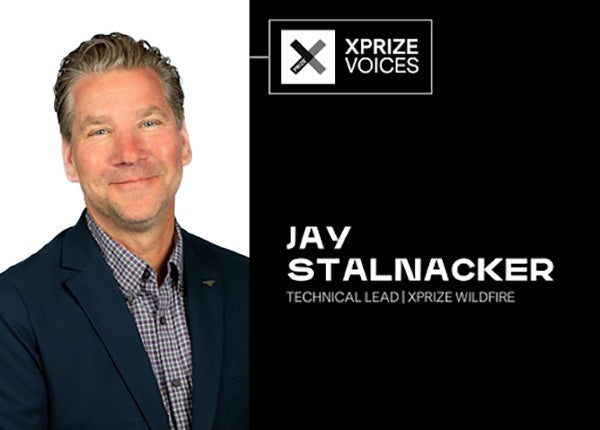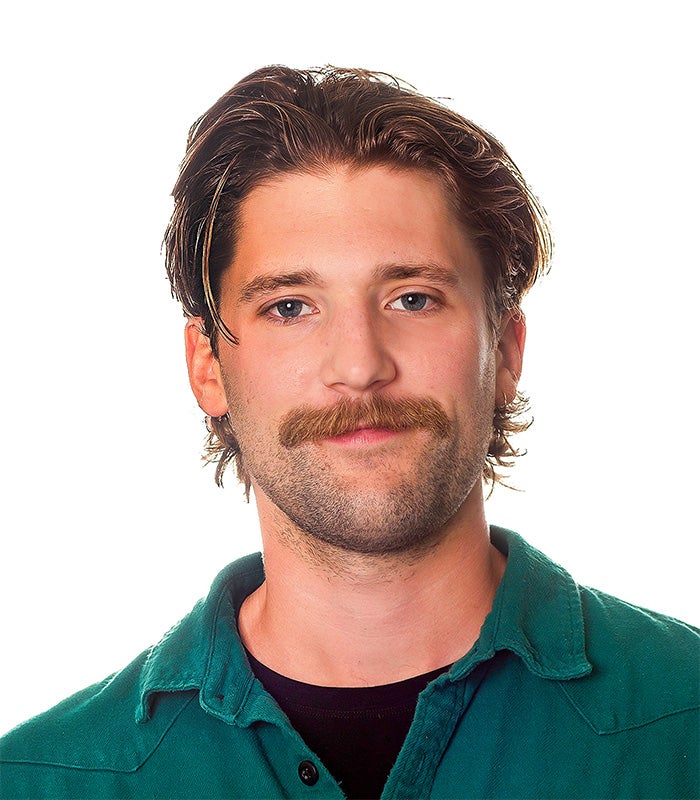
Welcome to XPRIZE Voices. In this interview story series, we will be exploring in-depth conversations with members of our XPRIZE community including our operations teams, donors, benefactors, competing teams, and our Brain Trust, as well as those outside experts who help us design and implement our competitions.
This interview format allows us to share a unique and inside look into various aspects of prize operations and competitions from the point of view of those most active in them. We hope you enjoy these stories of the people who help make XPRIZE the global leader in designing, launching, and executing large-scale competitions to solve humanity’s greatest challenges. Our inaugural XPRIZE Voices features Jay Stalnacker, the Technical Lead for XPRIZE Wildfire. Please enjoy and stay tuned for more!
XPRIZE: I'm James Lynch and today we're talking with Jay Stalnacker, the Technical Lead of XPRIZE Wildfire. Jay, I was hoping you could give us a bit of a rundown on the $11 million four-year competition to innovate firefighting technologies and end destructive wildfires. What's the goal of the prize and how are we going to go about achieving it?
JS: It's a little complicated, but basically we have two goals, and within the one competition, we actually have two competitions.
Track A is space-based detection of wildfires. We're trying to get repeat wildfire observations from space down to under 10 minutes in our competition.
Track B is the autonomous wildfire response and detection track. If I had a favorite child this is it. We're asking competitors to autonomously detect a dangerous wildfire and then go put it out all within 10 minutes.
They’re both very audacious compared to current industry best practices, standards, and capabilities. But it's exciting to see the technology as it moves forward.
XPRIZE: What kind of solutions are you thinking might present themselves?
JS: Those questions are pretty exciting and unknown. For the space-based track, we’re asking teams to more quickly repeat wildfire observations from space and to do that I think we’ll see some advancements in observational tools like sensors and cameras. Some of the hurdles right now include the ability for these cameras from space to see through smoke, clouds, moisture, and nighttime. We do expect to see technology analyze the current observational data to make it better through AI, and computer generated learning and observation. There is so much exciting stuff, and we cover a lot of it on our prize page if anyone is trying to find out more.
In the autonomous world, I think that the technical advances are going to be around detection. Just like space-based, all our detection systems on the ground or in the air right now have all these limitations. We're asking competitors to find the fire and put it out in less than 10 minutes. That's pushing the envelope for detection systems.
XPRIZE: In a lot of XPRIZE Wildfire communications we see that the goal is not to end all wildfires, but to end extreme wildfire events. What makes an extreme event?
JS: It's a great question. We have tried to focus our message on that word “destructive” fire. That is the key. Destructive fire can be deadly, but in general, it's an unwanted fire, a fire in an area which has high values at risk: lives, homes, infrastructure. And it has the potential to grow exponentially because of the fuel loading. In other words, the trees, the homes, whatever causes the fire to be able to move quickly.
Additionally, a dangerous fire could be driven by weather conditions. So, in normal weather conditions, maybe a fire is no threat and it's doing good things. We call it a good fire, but under high winds, it's going to turn into a wildfire that's destructive.
So the reality is a lot of different things contribute to the decision around good fire versus bad fire. But what I want to highlight to our audience today and to our foundation and all our partners is that that decision only comes from better information that's delivered fast. We're trying to deliver better information as quickly as possible so that we can make that determination.
XPRIZE: How does a good fire play into forest ecology and keep the whole ecosystem working?
JS: Hundreds, thousands of years ago natural fire was here. Lightning strikes have always existed. Fire back then was uncontained, uncontrolled, it burned frequently, but these were often smaller fires.
A fire can rejuvenate the landscape and it allows for that landscape to regrow and redevelop and those trees and the flowers and the grasses to regrow in a natural state.
Ponderosa pine trees are an example of fire dependent trees. The seeds in ponderosa pine cones only drop once they’re introduced to enough fire intensity. Isn't that crazy? The fire comes through, melts resin that keeps the seeds otherwise locked in place, the seeds drop from the cones, germinate, and then we have more ponderous pine trees.
In certain ecosystems, you want the entire forest to replace itself through bigger “stand replacement” fires. It's meant to do that every 300 years, as forest health can decline through things like disease.
Now when those fires become too intense because the pine trees have grown and grown and there's grass and brush burning, those seeds just get consumed. We call it the “scorched earth effect,” if you will. These ecosystems that should have natural fire cannot accept it anymore.
XPRIZE: In this prize, what do the partners look like? Who's involved?
JS: One of the first conferences we attended was a conference about the use of fire for Native American and other cultural communities and how they use it and why they use it. That was a privilege to sit in those conferences and listen to those different types of communities and viewpoints. It was important to us to go out and talk to the community to make sure we understood what they needed and wanted.
It's really important that their voices are heard in this. And for two reasons. One, they have some really valuable information about ecosystems that we would never, even as scientists, be able to obtain. These are thousands of years of knowledge passed down that we need to incorporate into any of our prizes and our designs. And then two, their world's changing and we need to help them adapt to this climate crisis, the changing ecosystems, and the fire danger.
XPRIZE: How will success in these competitions help end destructive wildfires?
JS: The earlier we can follow a fire, and the more details we can get on when it started, the more time we have. If you don’t have frequent detailed information, it leads to maybe a small little creeping fire turning into a wildfire that's a disaster or destructive fire. The more information we receive, the more it expands the timeframe for decision-making. And that's really what we're looking for.
A lot of different things contribute to the decision around good fire versus bad fire. But what I want to highlight to our audience today and to our foundation and all our partners is that that decision only comes from better information, delivered fast. We're trying to deliver better information as quickly as possible so that we can make that determination.
To learn more about XPRIZE Wildfire, subscribe to our Biodiversity + Conservation newsletter here, our monthly foundation-wide newsletter The XChange, or find us online at Facebook, X, Instagram, LinkedIn and TikTok.
